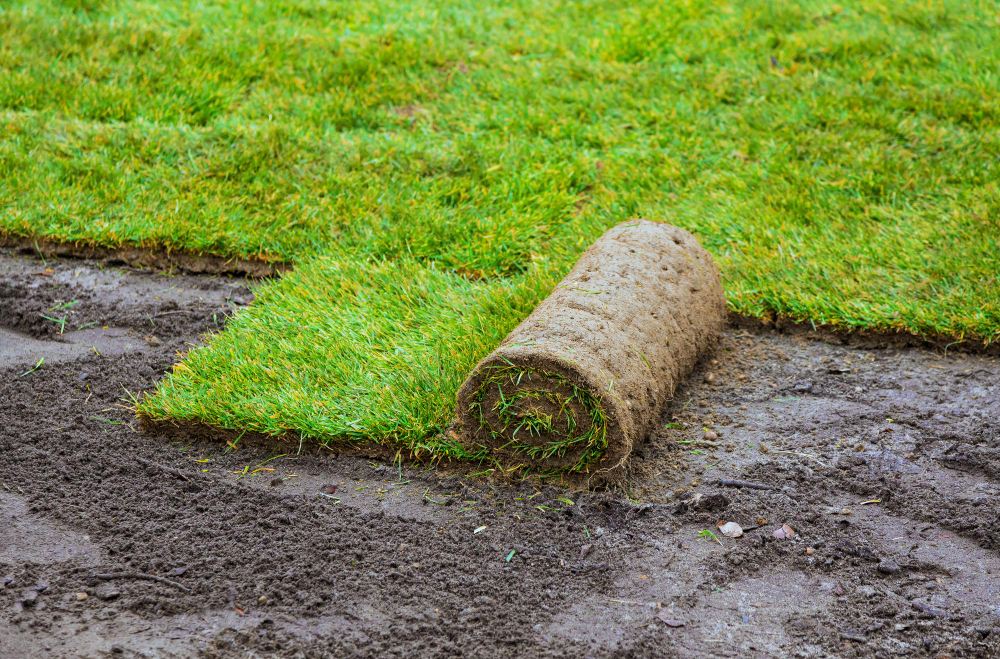- Lawn Turf
- Artificial
- Soil
- Timber
- Composite Decking
- Paving & Stone
Get In Touch With Our Experts Today!
Give us a Call! - Seed & Fertiliser
- Dressing
- Bark

May 13, 2025 Laying TurfTurfTurf InstallationTurf Tips
Can you lay turf wrong? Although it’s a fairly straightforward process, unfortunately, when it comes to installing natural turf, there are errors that can turn your new lawn into a patchy and costly disappointment.
Whether you’re a seasoned landscaper or a first-time homeowner, installing turf correctly is crucial to ensure your lawn looks great and lasts for years to come. To make the whole process easier, we’ve pulled together the most common mistakes, so you know what not to do when laying turf.
Preparation is the most significant and influential step in laying grass turf. If you want a healthy, flat and lush-looking lawn, then this is the part to perfect! There are a few things to consider when prepping your soil for turf installation:
Water is great for your new turf, but you don’t want too much of a good thing! Especially if there’s nowhere for the water to go. If you lay turf onto soil with poor or zero drainage, you risk drowning your grass before it’s even begun. Water pooling or waterlogged lawns indicate a drainage problem, which could be caused by compacted soil or no elevation on the lawn for surface water to drain off. Our guide on how to prevent your lawn from becoming waterlogged can provide more advice.
Grass turf is a living, breathing product. Like plants, they need water, food, and oxygen to survive and thrive. When your turf is rolled up for long periods, with restricted access to these essential elements, it starts to deteriorate. Not to mention the increasing temperature inside the turf rolls, which can affect the colour of your turf and encourage mould or lawn diseases
At GDT&S, we deliver your order from field to the site as quickly as possible. This means you have the freshest turf possible for your landscaping project. The quicker you roll out and lay your turf, the best chance it has to anchor in with minimal stress for you or the turf.
There’s a reason why we lay turf in a staggered, brick wall pattern. It allows the edges of each turf roll to knit tightly together, creating a strong, resilient lawn. If you lay your rolls side-by-side, you’ll experience gaps – turf will struggle to knit together, leaving gaps which can cause trip hazards and space for weeds to grow.
The first few weeks after turf installation are critical for root establishment, lawn health and long-lasting success! It can be easier to leave it to ‘do its own thing’, and in many ways, it will. But at the beginning, fresh turf needs regular watering and zero mowing. Whether it’s your lawn or you’re advising a client, water your new lawn every day for the first couple of weeks and avoid walking on it. Wait until the grass is well rooted before mowing or using it. Our blogs on how soon you should water new turf and how soon you can use your new lawn can help.
Our turf laying guide walks you through the key steps and turf tips for installing turf. It’s full of turf prep tips, the tools you need and how to achieve a professional finish every time. As long as you follow the correct advice, turf can be laid any time of year for incredible results.
We don’t want all your hard work to go to waste. By avoiding these common turf problems when installing grass turf, you can give your lawn the best chance and save yourself a lot of money and stress correcting these errors!
If you need more turf installation tips or advice, get in touch with our turf experts, who are happy to help. And remember, we can arrange to have your turf delivered where and when you need it, so there’s no delay in your project, and your turf can be laid as fresh as possible.
Are you a landscaper? Be sure to check out our Trade Account and instantly access additional benefits, bulk order discounts and trade support.
CALL US NOW ON 01234 818 253